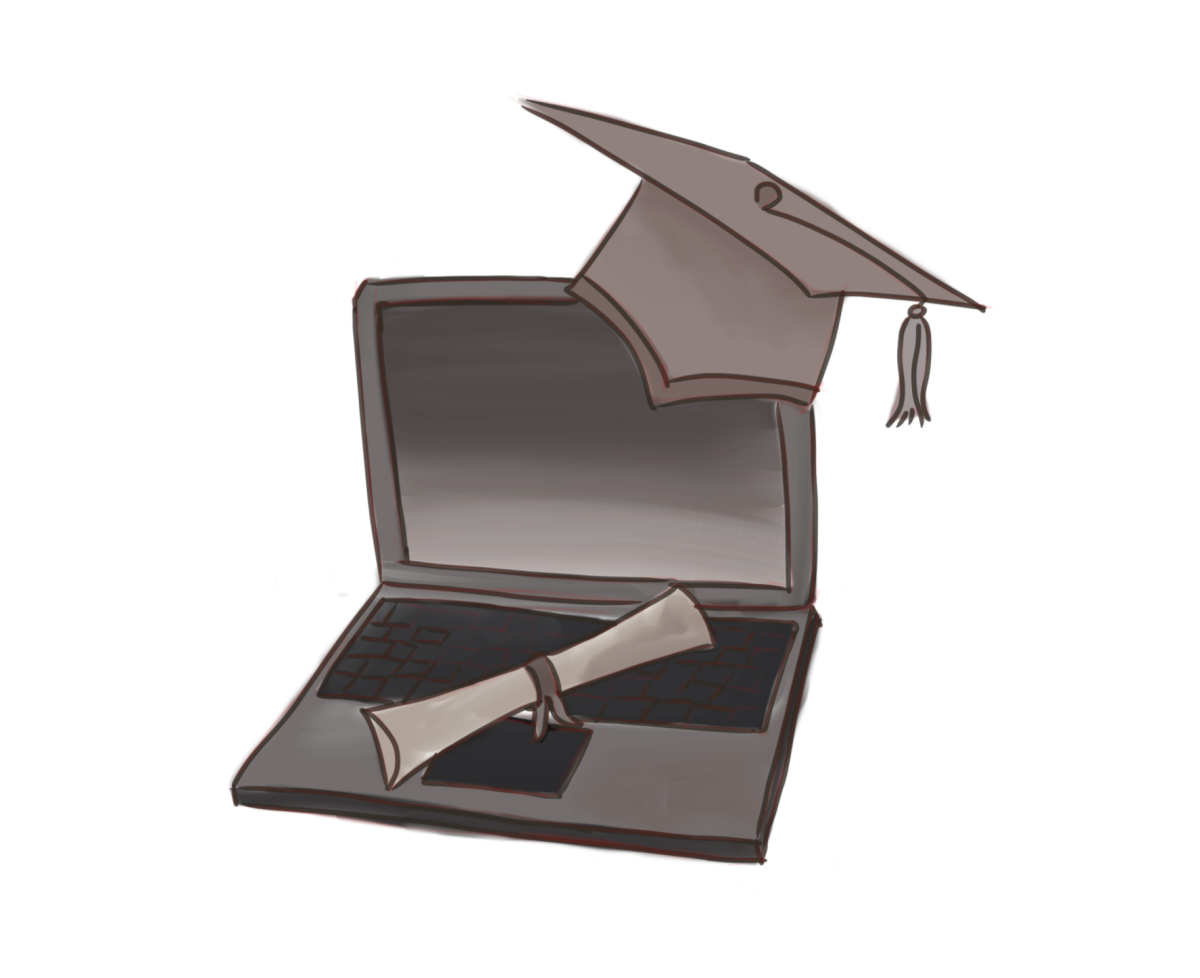Everyone remembers COVID-19: the masks, isolation, social distancing, and, of course, online school.
Most Claremont High School (CHS) students took classes on Zoom for elementary school or for a portion of middle school. This, unfortunately, caused students’ literacy rates post-pandemic to drop from 25.2% significantly behind grade level, to 32.8%, according to the National Library of Medicine. But the real problems with online learning exist at a much higher level of education: college.
Face-to-face interaction enforces highly valuable skills, such as problem-solving and collaboration. During the pandemic, many students lost these skills and fell behind in their learning. It was also much more difficult for teachers to educate students because their ability to motivate students was hindered, and it was harder for teachers to ensure that their students were actively working.
Tara Ervin, a math teacher at Claremont High School, explained the most difficult part of teaching online. “[It was hard] really getting the students involved and being active participants in the experience,” Ervin said.
While middle schools and high schools have mostly eliminated these problems due to a return to in-person learning, colleges continue to suffer from these issues. While the pandemic has ended, about 4.9 million college students continue to take classes solely online, according to BestColleges.
Currently, colleges are increasing the amount of online and asynchronous classes that they offer, with some students not being required to ever step into a physical classroom. The main reason for this is that a class without a classroom means that students do not have to take the time to commute to school. However, convenience is not always a priority because an increase in online courses means that young adults are moving through their entire college careers lacking crucial face-to-face interactions with the people who will shape their education.
Some students at CHS have had experiences with friends and family attending online college. “[My cousin] is in medical school, and a lot of his classes are online and not in person,” a CHS sophomore said.
Considering that the majority of medical school curricula contain a significant amount of laboratory studies and hands-on activities, classes like this are not effectively preparing medical students for their careers.
Ervin agrees that one of the risks of online courses is that teachers have very few ways of knowing how much effort their students are devoting to the class. “[During Covid], I could encourage students, but you don’t know what they were doing behind the screen,” Ervin said. “You did not know if they were really engaged in things.”
There is no need for college students to have access to so many asynchronous courses if these courses are going to negatively impact their education. Convenience is the main motivation for offering online courses, but convenience hardly matters when students’ educations and futures are on the line. Students may not have enough experience to be adequately prepared for the workforce, hurting future generations.









